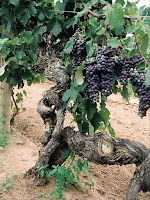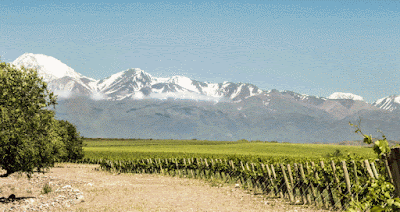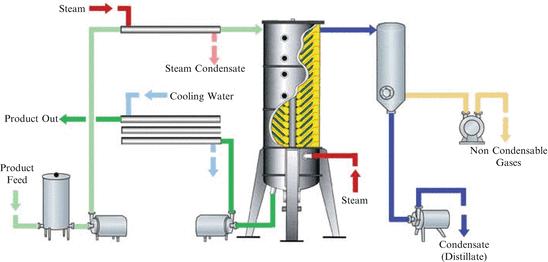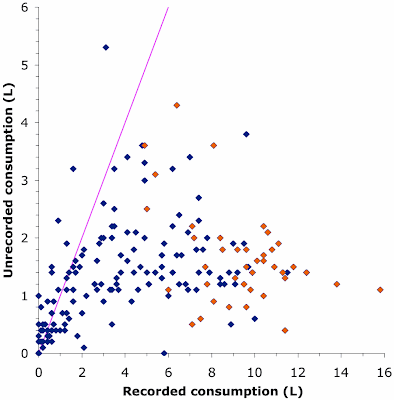However, oldness is a relative thing. In the USA “old vine” seems to mean anything more than 30 years old. In Australia, they don't call them “old” unless they come from the 1800s (the oldest recorded ones seem to have been planted before 1850). If I look out my back window, I can see a dozen oak trees that seem to be a couple of hundred years old, so even 1850 may be a bit young, for a plant.
If I look out my front window, I can see across the field to the farmhouse that used to own the land on which my house stands — it appears on a map dated 1699. My house, on the other hand, dates from 1990. If I look out my side window, I can see across the creek to the church, which is dated c. 1400 AD. In front of it stands the original small chapel, which is dated c. 1200 AD.
This is not an exercise in one-up-manship, but is intended simply to emphasize that oldness is relative, not absolute. A medieval church is obviously older than almost all plants. We therefore need to compare plants with plants; and also we should really use the word “older” instead of “old”.
There is, as far as I know, no official definition of “old vines”, or “vieilles vignes” if you prefer French. As far as individual plants are concerned, you can read about the oldest known grapevines in Wikipedia; but we are talking here about whole vineyards, producing commercial wines.
Let’s start with what are believed to be the oldest vineyards, so that we have a baseline. They are all in Australia, which has the advantage of isolation in order to preserve much of its heritage.
The Freedom Shiraz vineyard, at Langmeil in the Barossa Valley (South Australia), was apparently planted in 1843, by Christian Auricht. His original plantings survive today (c. 1 acre), although the vineyard now combines younger vines with the originals. Similarly, the Turkey Flat Shiraz vineyard, also in the Barossa Valley, was planted in 1847, by Johann Frederick August Fiedler. These seem to be the oldest vines whose age has been authenticated; but today they are also a combination of younger vines with the originals.
The oldest vineyard that is claimed to consist entirely of original vines is another Shiraz one, but this time from the Goulburn Valley (Victoria). The Tahbilk Shiraz vineyard was established in 1860, with Ludovic Marie as vigneron. It has had a checkered history, but the original cellars and vineyard from 1860 are still in use.* Incidentally, Tahbilk also claims to have the largest single holding of Marsanne grapevines in the world (100 acres), originally also planted in 1860, although the current vines date from 1927.
There are apparently a couple of other vineyards in the world, some of whose vines date back to this same period. Jancis Robinson's Old Vine Register was originally compiled by Tamlyn Currin in 2010, and it has been updated occasionally since then (last updated 27 Nov 2019). It lists two such vineyards:
- Henri Marionnet, Domaine de la Charmoise (Touraine, Loire, France) — c.1850
- Hess Family, Colomé (Calchaqui Valley, Salta, Argentina) — 1854
However, most of the other vineyards that have been formally recorded date from the 1880s onward.
For example, California's Historic Vineyard Society has a Registry of Heritage Vineyards, based on three criteria:
- A currently producing California wine vineyard
- Original planting date at least 50 years ago
- At least 1/3 of existing producing vines can be traced back to the original planting date.
- Saucelito Canyon (San Luis Obispo) — 1880?
- Cazas Vineyard (Temecula Valley) — 1882
- Old Hill Ranch (Sonoma Valley) — 1885
- Bechthold (Lodi) — 1886
- Monte Rosso (Moon Mountain) — 1886
- Dona Marcelinas (Santa Rita Hills) — 1887?
- Bedrock (Sonoma Valley) — 1888
- Martinelli Road / Banfield) (Russian River Valley) — 1880s
- Old Crane / G.B. Crane Vineyard (St. Helena) — 1880s
- Picchetti (Santa Cruz Mountains) — 1880s
There is also a South Africa Old Vine Project, which has a list of the 30 Oldest Old Vine Blocks in South Africa. The oldest three date from 1900 (in Wellington, Swartland, and Breedekloof).
Given the number of older vines in the Barossa Valley, it should come as no surprise that there has been one attempt to formalize a few definitions of oldness, in the form of the Barossa Old Vine Charter (2009):
- Barossa Old Vine — at least 35 years of age
- Barossa Survivor Vine — at least 70 years of age
- Barossa Centenarian Vine — at least 100 years of age
- Barossa Ancestor Vine — at least 125 years of age
- Cirillo Estate Wines (Barossa Valley) — 1850
- Old Garden Vineyard (Barossa Valley) — 1853
- Torbreck Russell Vineyard (Barossa Valley) — 1857
- Tyrrell’s Wines (Hunter Valley) Stevens Vineyard Old Patch — 1867
- Bests's Wines (Great Western) — 1868
- Tyrrell’s Wines (Hunter Valley) 4 Acres Vineyard — 1879
- Mount Pleasant (Hunter Valley) Old Hill Vineyard — 1880
* The winery is definitely worth a visit. I still remember a visit at the beginning of a cold winter day, in which I literally had to cup the tasting glass in my hand for a minute, to warm it enough to smell its contents.













